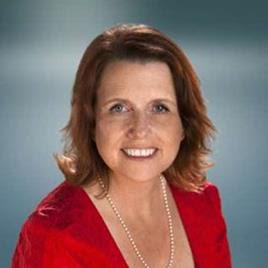Claire Sporton is SVP of Customer Experience at Confimit. We spoke to her just after the release of Confirmit’s “State of Customer Experience” Report which, among other things, assesses the efficacy of the ever-broadening CX marketplace. This lively conversation was edited for space.
TheCustomer
We talk a lot about customer-centricity for brands’ overall efforts to engage and retain their customers. But we don’t often break that down into its core components – CX being one of the primary ones. After all – by definition, CX is a customer-centric effort. My question then is – why are we still trying to define customer experience in ways other than engagement and customer-centricity
Claire Sporton
 I think we’ve got to take a deep breath and get our heads out of the sand and face the issues we have. I’m seeing a lot of my compatriots across the CX world talking about the same challenge that we have around the CX discipline and whether it is actually delivering on customer-centricity.
I think we’ve got to take a deep breath and get our heads out of the sand and face the issues we have. I’m seeing a lot of my compatriots across the CX world talking about the same challenge that we have around the CX discipline and whether it is actually delivering on customer-centricity.
TheCustomer
There are a lot of ways of looking at this at this issue. How do you think other companies out there are defining that? I was talking to somebody recently who works in this space as well, they said, you know, a lot of times you get an edict from the C suite that says, ”Hey, we have to be more customer-centric, so hit the CX button and make us much more customer-centric”.
It’s about human brains being bringing the best of themselves to work using their intuition, using all of their knowledge – being supported, enabled and empowered.
Claire Sporton
Wouldn’t it wouldn’t be great if there was a big red button that we could hit and then we could make everybody customer-centric in the organization. But I think that’s the holy grail that many organizations have been after for many years now. And it really is all about a culture change. But just saying it does not make a company somehow more customer-centric.
Customer experience programs are being put in place to help identify and monitor what customers want and then produce a roadmap for organizations to design themselves and begin to deliver on that.
From the research that we did in our State of Customer Experience Report, we were able to see, very clearly, who were the leaders and who were the laggards in terms of customer experience – the sophistication and results of the programs they employed. And just to clarify, this wasn’t about measuring and assigning some kind of a CX score, but actually looking at the programs themselves and if they are delivering a healthy ROI.
TheCustomer
In your experience, does that always boil down to some sort of financial metric? Or are there other kinds of metrics that that you are driving towards?
Claire Sporton
That really depends on what your organization is looking to measure. As much as I love NPS (Net Promoter Score) and I’ve used it for many, many years, there are very few senior execs who wake up in the middle of the night with the cold sweats going, “Oh, my goodness, I wonder how we should measure of our CX success!”
It almost always comes down to financial metrics of some sort: revenue growth, share of market, share of wallet, churn rates and cost to serve. These are all financial terms and they’re all things that a well-run cx program can support. So, we make sure that we are measuring our success from an ROI perspective.
TheCustomer
So how does a firm go about making that kind of seismic shift to becoming customer-centric on more than just a financial-outcome-alone basis and more on a cultural basis? How does Confirmit approach that?
Claire Sporton
As an industry, the customer experience community needs to move from being in the box of measuring reality and move making a shift into changing reality. If we do that, then we are going to be successful as programs and we’re going to drive success for our organizations.
So not only do we need to capture the data from the various customer touchpoint data sources, we need to get that data in front of the people who are making decisions and help them make a better, more informed strategic plans.
TheCustomer
We’ve addressed the company leadership and planners. But how do you implement a successful CX strategy if a large part of it depends on middle management’s full embrace? That is often the place where the “best laid plans … “.
Claire Sporton
You’re right. One of the biggest challenges in organizations isn’t the senior leadership team. It’s that frozen layer of middle managers, where we’re going to drive the hardest.
I’m not a technologist by training, I’m a psychologist. And that ownership is so important, because as soon as you own the data, and you own the decision that you make, you’re not being told to do something, you make the decision, and guess what – you’re much more likely to follow through. And that really is the holy grail – not telling people what to do but getting them to feel ownership.
And that’s what real customer-centricity is about. It’s not about a computer telling you, or some clever AI that tells you to do this next – that’s not customer-centricity. It’s about human brains being bringing the best of themselves to work using their intuition, using all of their knowledge – being supported, enabled and empowered.
Photo by Pacific Office Interiors on Unsplash.













